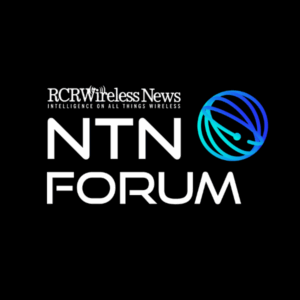Consumers love to complain about their wireless phone service, but when you look at the data, it tells a different story. Analytics for customer satisfaction show which factors matter most to consumers and which have less of an impact (price, for example, is not as important as you might think).
The American Customer Satisfaction Index (ACSI) has measured customer satisfaction in the telecommunications industry for 15 years. Wireless phone service has always been included in that report – until now.
For the first time this year, ACSI bundled wireless service and cellphone providers into their own report, encompassing three new categories of wireless phone service providers—mobile network operators (MNOs), full-service mobile virtual network operators (MVNOs), and value MVNOs—along with cellphone manufacturers and smartphone brands.
The reason ACSI created a separate report for these sectors is simple: There’s just too much data to do it any other way.
This data includes customer satisfaction by spending level as well as new metrics for network quality. For the latter, customers evaluated call quality (clarity and strength), call reliability (dropped calls), network coverage, and data speed.
Customer satisfaction is a major indicator of company financial performance, and oftentimes, a household’s willingness to spend is greatly impacted by changes in customer satisfaction.
So what tale does the data on wireless service and cellphone providers tell? Let’s take a look.
Customer satisfaction and network quality don’t line up among MNOs
The data reveals T-Mobile has the highest customer satisfaction score among MNOs. The provider offers better variety than its competition and leads the way in ease of billing. However, T-Mobile’s network quality left much to be desired, its score falling in the middle of the pack.
However Verizon Wireless, which tied for second in customer satisfaction with U.S. Cellular, tops all MNOs in network quality. The provider receives best-in-class marks for dropped calls (or lack thereof) and call clarity.
AT&T is closer to the bottom in overall customer satisfaction, yet places near the top in network quality.
Sprint has some serious work to do. It’s at the bottom in both customer satisfaction and network quality. It has the least variety among MNOs, and also rates lowest in both quality and reliability.
While a merger with T-Mobile is in the works for Sprint, it’s unlikely to help either party from a customer satisfaction standpoint. According to ACSI data, mergers usually hinder customer satisfaction, at least in the beginning.
Cricket Wireless leads full-service MVNOs
Cricket Wireless – part of AT&T’s prepaid portfolio – steals the show among full-service MVNOs. It leads the category in overall customer satisfaction and holds the highest mark in every customer experience benchmark except mobile reliability, where it ties at the top with Virgin Mobile.
Despite its stellar showing in mobile reliability, Virgin Mobile, which ties for second in customer satisfaction with Metro by T-Mobile, needs to make up ground in other areas of customer experience. Among MVNOs, the carrier ties for last place in mobile quality and has the least amount of variety.
Sprint’s Boost Mobile has its work cut out for it. It has the lowest customer satisfaction among full-service MVNOs and finishes at the bottom of almost every customer experience benchmark, including call clarity, call reliability, and data upload/download speed and reliability. According to ACSI data, Boost Mobile’s issues may stem from device compatibility, as services will only work on Boost Mobile devices and some certified Sprint devices.
Give the little guys their proper due
The bigger network providers may steal the spotlight, but it’s the smaller carriers that are on top of their customer satisfaction game.
Not only do value MVNOs have the highest customer satisfaction among the wireless categories, but Consumer Cellular sweeps all carriers measured in nearly every individual benchmark. No-contract, postpaid service, and discounts to AARP members are big draws for Consumer Cellular customers.
There’s value being overlooked everywhere
Given the overwhelming customer satisfaction in value MVNOs, you may be inclined to think that price is the paramount factor in customer satisfaction. That’s not necessarily the case.
While price promotions can be an effective tool for improving customer satisfaction, this tends to be merely a short-term fix. The ACSI finds that quality plays a more significant role in improving satisfaction, and organizations that focus on quality improvements see more success with respect to customer satisfaction over the long haul than those that focus on price.
The same holds true when looking to improve customer satisfaction. While it might make sense to focus on increasing satisfaction among customers who spend the most, that’s not always the case. The ACSI developed a Customer Segment Value (CSV) model that takes into account how much customers spend each month on their wireless service along with customer satisfaction and customer retention data.
This data pinpoints the most and least satisfied customer segments in the context of revenue and retention to show wireless carriers where to focus to grow their business. A closer look at the data through the CSV model can help providers retain customers, improve satisfaction, and boost their revenue, all through improving customer experience.
In the end, customer satisfaction tells you who’s happy, and who’s not. But if this report tells us anything, it’s that you can’t just take the data at face value; you have to comb a bit deeper to fully grasp how the different aspects of the customer experience influence overall customer satisfaction – and wireless providers’ bottom line.
Editor’s note: David VanAmburg is the Managing Director of the American Customer Satisfaction Index (www.theacsi.org). He has served as an expert in customer satisfaction for more than 20 years, addressing the relationships among satisfaction, quality, customer service, loyalty, and shareholder value.







